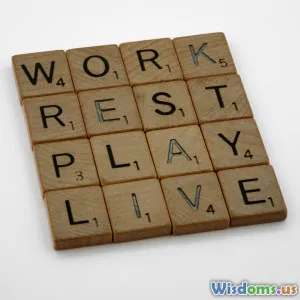
How to Turn Nervous Energy into Audience Engagement in Seconds
8 min read Master converting nervous energy into magnetic audience engagement instantly with proven strategies and real-world insights. (0 Reviews)
How to Turn Nervous Energy into Audience Engagement in Seconds
Nervousness—the racing heart, sweaty palms, and jittery thoughts—can feel like a formidable barrier when standing before an audience. Almost everyone has been there: moments before stepping on stage, giving a presentation, or speaking in a meeting. But what if that surging nervous energy isn’t your enemy, but rather your greatest asset? What if, with just a few conscious techniques, you could transform that nervous buzz into an electrifying connection with your audience within seconds?
In this comprehensive guide, we'll unravel how you can convert your often unwelcome nervous energy into captivating audience engagement quickly and effectively. Drawing on psychological research, expert insights, and real-world examples, you'll learn actionable strategies for embracing your nerves—and using them to your advantage.
Understanding Nervous Energy: The Hidden Fuel of Engagement
It's essential first to recognize that nervous energy is a biological and mental phenomenon designed to prepare your body for performance. When your sympathetic nervous system activates, your heart rate increases, adrenaline floods your system, and your senses heighten. This 'fight or flight' response can sharpen focus and invigorate you, but only if managed well.
The Science Behind the Surge
A 2017 study published in the Journal of Experimental Psychology found that reframing anxiety as excitement leads to improved performance in presentations. The key takeaway is your mindset: interpreting the physiological symptoms of nervousness not as a threat but as readiness primes you to engage effectively.
Interestingly, great performers—musicians, actors, and public speakers—often report feeling pre-performance nerves but channel that energy intentionally to enhance their presence onstage.
Step 1: The Power of Reframing Nervousness
Before the moment you speak, cognitively manipulate your perception of nervous energy. Tell yourself, “This energy is excitement,” rather than fear. Presidential speech coach Peggy Noonan emphasizes in her teachings: “Changing your inner dialogue before a speech can shift how your energy manifests.”
Practical Application
In the seconds before stepping on stage or starting your talk, try a quick verbal cue: “I am energized and ready.” This simple affirmation helps program your brain to convert nervousness into positive tension that invigorates rather than incapacitates.
Step 2: Engage with Authentic Body Language
Your physical state deeply affects your audience's perception and your own nervousness.
- Grounded Stance: Plant your feet firmly, shoulder-width apart to feel stable and convey confidence.
- Open Posture: Avoid locking your arms or turning away. Open gestures invite connection.
- Eye Contact: Begin with brief, warm eye contact around the room to create intimacy instantly.
Example: Noted TED speaker Amy Cuddy's research on 'power poses' demonstrates that adopting expansive and open postures for just two minutes boosts confidence and lowers stress hormones.
Step 3: Harness Your Energy with Vocal Variation
Nervousness often speeds up your speech and creates monotony. Instead, use your heightened energy to introduce vocal dynamism:
- Vary your tone: From excitement to curiosity, modulating your tone captivates attention.
- Pace yourself: Purposefully slow certain phrases, then quicken them to build rhythm.
- Pause intentionally: Pauses create suspense, letting the audience internalize points.
Legendary orator Winston Churchill was famous for using deliberate pauses that made his speeches unforgettable and authoritative.
Step 4: Connect Through Relatable Stories and Humor
Transform jittery energy into engagement by drawing your audience in emotionally:
- Share brief anecdotes: Relatable stories humanize you and diffuse tension.
- Use light humor: Self-deprecating humor about nervousness can quickly establish rapport.
For instance, comedian John Mulaney humorously describes his pre-stage anxiety, turning it into a shared experience that bonds audiences and transforms nervous energy into laughter and warmth.
Step 5: Leverage Physical Movement Mindfully
Instead of restricting restless energy, embrace it through purposeful movement:
- Gesture to emphasize: Use hand movements to illustrate key points.
- Move purposefully: Transition across the stage during natural breaks.
- Engage with props or visual aids: Interaction not only anchors your energy but also draws attention.
Shakespearean actors often channel physical tension into animated gestures, making their performances vivid and immersive.
Real-World Example: Turning Fear into Presence
Consider Malala Yousafzai’s 2013 speech at the United Nations. Despite her youth and the daunting platform, Malala admitted feeling nervous but reframed it into determination. Her fervent voice, collected gestures, and compelling story transformed nervous energy into inspirational engagement watched by millions.
Quick Takeaways to Practice Before Your Next Presentation
- Reframe your anxiety as excitement. A mindset shift reprograms your body’s responses.
- Adopt power poses. Even two minutes of these change your hormone levels.
- Use vocal variety. Engage your audience emotionally and intellectually.
- Incorporate storytelling and light humor. These tools humanize and relax the room.
- Move purposefully. Controlled movement projects confidence and channels restless energy.
Conclusion: From Jitters to Jubilation
Nervous energy is not a roadblock but a potent resource waiting to be harnessed. By reframing your mindset, consciously controlling your body language, vocal patterns, and storytelling, you can convert trembling apprehension into riveted attention within moments. Remember, nervousness signals your passion and investment in the subject – it's your natural performance fuel.
The next time that buzzing feeling arises, greet it not with fear but as an ally. With intention and practice, you can command the room, hypnotize your audience, and turn nervous energy into captivating engagement—almost instantly.
Let your nerves be the spark that ignites memorable connections, inspiring you and your listeners alike.
Embrace the jitter, own your moment, and light up your audience.
Rate the Post
User Reviews
Popular Posts


















